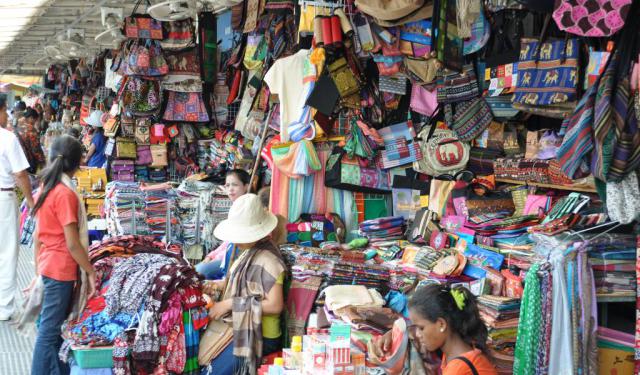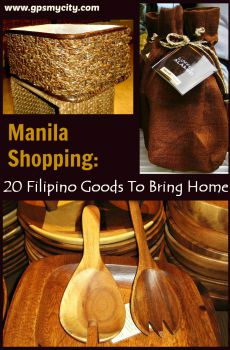Intramuros, Manila
Once a fortified city in the European medieval style, Intramuros is now a distinctive landmark in Asia. Covering an area of 64 hectares, its imposing walls enclose a heritage site that is open to public visits, with unguided tours permitted.
Today, Intramuros consists of a historic district dating back centuries, entirely encompassed by fortifications. During the Spanish Empire, this area was considered the entirety of the City of Manila. Surrounding towns and suburbs beyond the walls, now districts of Manila, were known as extramuros, meaning "outside the walls" in Latin. These were independent towns that became part of Manila only in the early 20th century.
Intramuros served as the administrative center of the Captaincy General of the Philippines, a constituent realm of the Spanish Empire, hosting the governor-general from its establishment in 1571 until 1865, and the Real Audiencia of Manila until the end of Spanish rule during the Philippine Revolution of 1898.
The walled city was also the religious and educational hub of the Spanish East Indies. The original campuses of the University of Santo Tomas, Asia's oldest university, and the Ateneo de Manila were located within Intramuros before relocating in 1927 and 1932 respectively. Today, the area still houses the main campuses of the University of the City of Manila, Colegio de San Juan de Letran, Mapúa University, Philippine Nautical Training Colleges, Colegio de Santa Rosa, and Manila High School. Intramuros was also an economic hub; its port, now Plaza Mexico, was the Asian center of the Manila galleon trade, facilitating the exchange of goods between Manila and Acapulco in present-day Mexico.
Construction of the Spanish walled city began in the late 16th century under orders from the Spanish imperial government. Its purpose was to safeguard the city from foreign invasions, replacing the pre-Hispanic settlement of Maynila along the shores of Manila Bay, near the entrance to the Pasig River.
Today, Intramuros consists of a historic district dating back centuries, entirely encompassed by fortifications. During the Spanish Empire, this area was considered the entirety of the City of Manila. Surrounding towns and suburbs beyond the walls, now districts of Manila, were known as extramuros, meaning "outside the walls" in Latin. These were independent towns that became part of Manila only in the early 20th century.
Intramuros served as the administrative center of the Captaincy General of the Philippines, a constituent realm of the Spanish Empire, hosting the governor-general from its establishment in 1571 until 1865, and the Real Audiencia of Manila until the end of Spanish rule during the Philippine Revolution of 1898.
The walled city was also the religious and educational hub of the Spanish East Indies. The original campuses of the University of Santo Tomas, Asia's oldest university, and the Ateneo de Manila were located within Intramuros before relocating in 1927 and 1932 respectively. Today, the area still houses the main campuses of the University of the City of Manila, Colegio de San Juan de Letran, Mapúa University, Philippine Nautical Training Colleges, Colegio de Santa Rosa, and Manila High School. Intramuros was also an economic hub; its port, now Plaza Mexico, was the Asian center of the Manila galleon trade, facilitating the exchange of goods between Manila and Acapulco in present-day Mexico.
Construction of the Spanish walled city began in the late 16th century under orders from the Spanish imperial government. Its purpose was to safeguard the city from foreign invasions, replacing the pre-Hispanic settlement of Maynila along the shores of Manila Bay, near the entrance to the Pasig River.
Want to visit this sight? Check out these Self-Guided Walking Tours in Manila. Alternatively, you can download the mobile app "GPSmyCity: Walks in 1K+ Cities" from Apple App Store or Google Play Store. The app turns your mobile device to a personal tour guide and it works offline, so no data plan is needed when traveling abroad.
Intramuros on Map
Sight Name: Intramuros
Sight Location: Manila, Philippines (See walking tours in Manila)
Sight Type: Attraction/Landmark
Sight Location: Manila, Philippines (See walking tours in Manila)
Sight Type: Attraction/Landmark
Walking Tours in Manila, Philippines
Create Your Own Walk in Manila
Creating your own self-guided walk in Manila is easy and fun. Choose the city attractions that you want to see and a walk route map will be created just for you. You can even set your hotel as the start point of the walk.
Historical Buildings Walking Tour
Manila’s long history results from its situation as a natural port in a huge bay. With the Spanish conquest of the Philippines in the 16th century, it became united, along with Mexico City and Madrid, into the first truly globalised trade system. Intramuros, Manila’s old walled Spanish town, stood for 350 years before World War II came, and still houses many of the historic buildings.
For a... view more
Tour Duration: 1 Hour(s)
Travel Distance: 2.5 Km or 1.6 Miles
For a... view more
Tour Duration: 1 Hour(s)
Travel Distance: 2.5 Km or 1.6 Miles
Traditional Markets
Traditional markets showcase a unique aspect of life in any city. The ones featured in this walk offer a glance into the authentic life and habits of Manila’s people and play a vital role in the Philippines' capital's economic and cultural landscape. Traditionally, local markets sell a broader range of products than regular shops can provide: from veggies and fruits to dried fish and... view more
Tour Duration: 1 Hour(s)
Travel Distance: 3.0 Km or 1.9 Miles
Tour Duration: 1 Hour(s)
Travel Distance: 3.0 Km or 1.9 Miles
Manila Introduction Walking Tour
The capital of the Philippines, Manila was officially founded in 1571 by Spanish conquistador Miguel López de Legazpi. However, an organized polity, called Maynila (meaning "where indigo is found" in Tagalog), existed on the site since as early as 1258.
The earliest human life in the area dates to 3000 BCE, but much of the existing constructions found around the city were created... view more
Tour Duration: 2 Hour(s)
Travel Distance: 2.3 Km or 1.4 Miles
The earliest human life in the area dates to 3000 BCE, but much of the existing constructions found around the city were created... view more
Tour Duration: 2 Hour(s)
Travel Distance: 2.3 Km or 1.4 Miles
Historical Churches Walking Tour
International surveys have repeatedly ranked Filipinos among the world’s most religious people. The archipelago’s colonization and evangelization by the Spanish, started in 1565, has left Manila with many shrines and churches sprawled around its streets, despite the destructions by wars and natural disasters. Some of these old churches are especially attractive due to their delicate mixture of... view more
Tour Duration: 2 Hour(s)
Travel Distance: 3.9 Km or 2.4 Miles
Tour Duration: 2 Hour(s)
Travel Distance: 3.9 Km or 2.4 Miles
Useful Travel Guides for Planning Your Trip
Manila Shopping: 20 Filipino Goods To Bring Home
An archipelago of 7,000+ islands, The Philippines is a diverse nation populated by different tribes, each having their own culture and traditions. In Manila, one can find a whole lot of things worth keeping as a Filipino memento; it just might take one a little while to figure out what's best...








